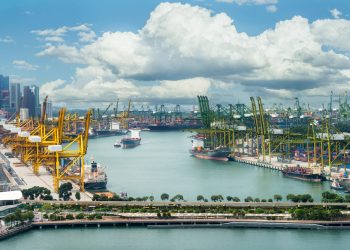To improve fuel efficiency and reduce air emissions
 Over fifty charterers, terminal operators and INTERTANKO Members gathered on Tuesday in Singapore to consider the benefits of the Virtual Arrival (VA) concept. The gathering was organised jointly by the Maritime and Port authority of Singapore (MPA), OCIMF and INTERTANKO. The objective was to hear how the VA concept had been used in practice and consider further how the concept could be made more widespread to improve fuel efficiency and reduce air emissions.
Over fifty charterers, terminal operators and INTERTANKO Members gathered on Tuesday in Singapore to consider the benefits of the Virtual Arrival (VA) concept. The gathering was organised jointly by the Maritime and Port authority of Singapore (MPA), OCIMF and INTERTANKO. The objective was to hear how the VA concept had been used in practice and consider further how the concept could be made more widespread to improve fuel efficiency and reduce air emissions.
The MPA’s Chief Executive of Operations, Capt Segar, chaired the session and provided the port authority’s views on the concept, explaining the expected benefits of reducing the number of vessels waiting in the anchorage and subsequently reducing the risk of incidents.
After an introduction to the concept by INTERTANKO’s Senior Manager Research & Projects Erik Ranheim, it was then left to the Panelists to provide their experience in using Virtual Arrival. This was kicked off by BP’s Nigel Tan who provided a very clear message that the success of the concept relied on the charter party clause and how this was formed.
This led to a good discussion about the trust and transparency required between the charterer and owner with INTERTANKO’s General Counsel Michele Whitementioning from the floor INTERTANKO’s Model Emissions Reduction Clauses (see link below), noting the fact that the use of a weather routing company is not a pre-condition of the use of the Virtual Arrival process.
Following this the delegates heard from Maersk Tanker’s Rajneesh Rana who gave examples of when VA had worked well for Maersk and the savings they had made on fuel and emissions. Rana was supported from the floor by Maersk’s charterering manager Steen Eriksen.
BP’s Trina Digby rounded off the Panel with a run-through of the benefits that their terminals had gained from using VA for over two years.
A robust discussion between the Panelists and the delegates allowed those present to consider the hurdles that may still exist which mean that VA is not more commonly used. Segar concluded the afternoon by taking the positive line and encouraging the terminal operators present to keep VA in mind in the future – in particular as Segar is looking at options for reducing the time permitted for tankers waiting at the anchorages.
Further details on Virtual Arrival can be found here: http://193.25.186.69/Topics/Environment/Air-Emission–GHGs1/Air-Emission–GHGs/Virtual-Arrival/
INTERTANKO Model Emissions Reduction Clauses for use with VA and explanatory note can be found here: http://www.intertanko.com/Topics/Legal-and-Documentary-/INTERTANKO-Model-Clauses/INTERTANKO-Model-Clauses1/Documentary-Committee-launches-model-INTERTANKO-Emissions-Reduction-Clauses/
Source: INTERTANKO





























































